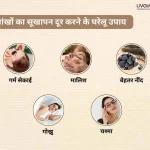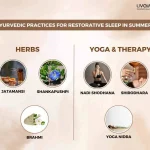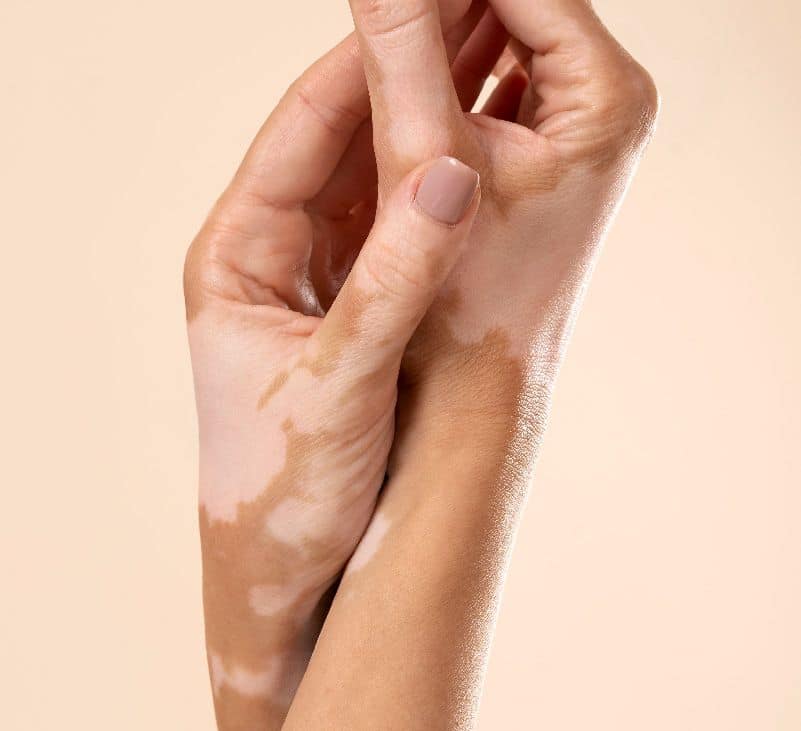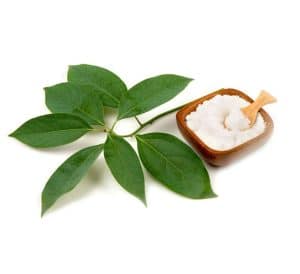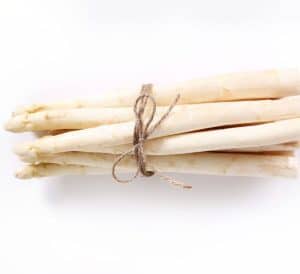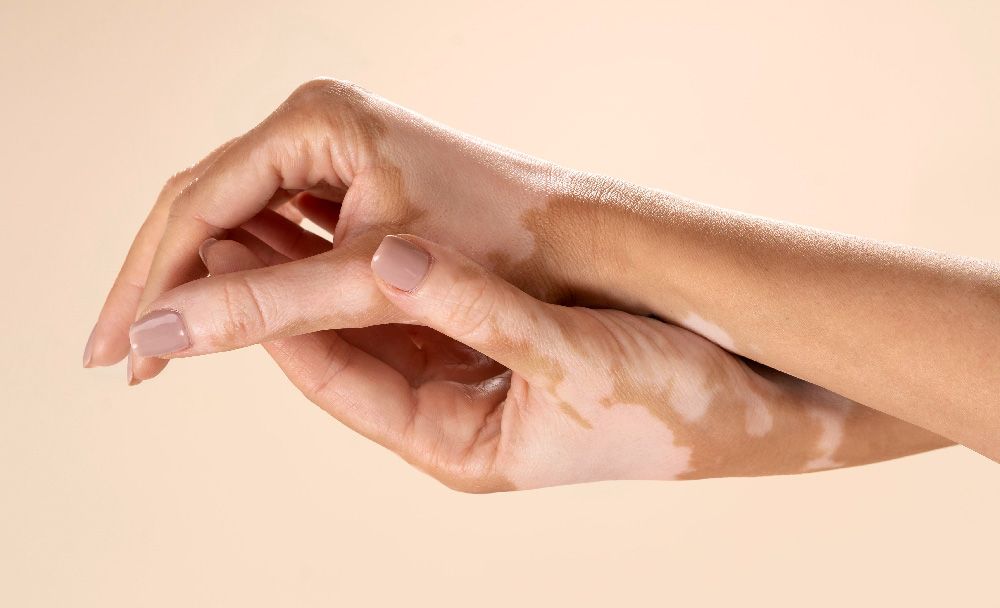
Leucoderma, also known as Vitiligo or Shwitra in Ayurveda, is a skin disorder characterized by the loss of pigmentation. It is a non-contagious condition that affects people of all races and genders, although it is more noticeable in people with darker skin tones. [1] In this article, we will explore the causes, symptoms, and treatments for this condition.
What is Leucoderma?
Leucoderma is a skin disorder that causes the loss of pigmentation in patches on the skin. This condition is caused by the destruction of melanocytes, which are the cells that produce pigment in the skin. The affected skin areas appear white or pale and can vary in size and shape. The patches may be more visible on parts of the body with more exposure to the sun, such as the face, hands, arms, and feet. [1] [2]
Leucoderma is not a life-threatening condition, but it can have a significant impact on a person’s self-esteem and quality of life, especially if the patches are visible on exposed areas of the skin. [1] [2]
Causes of Leucoderma
The exact cause of leucoderma is not fully understood, but it is believed to be an autoimmune disorder in which the body’s immune system attacks and destroys the melanocytes. Other factors that may contribute to the development of leucoderma include:
1.Genetics
Some studies suggest that genetic factors may play a role in the development of leucoderma. People with a family history of the condition are more likely to develop it. [1] [3]
2. Environmental factors
Exposure to certain chemicals, such as phenols and hydroquinone, may increase the risk of developing leucoderma. Other environmental factors that may contribute to the condition include sunburn, stress, and injury to the skin. [1] [3]
3. Autoimmune disorders
People with autoimmune disorders, such as thyroid disease, are more likely to develop leucoderma. [1] [3]
4. Pitta Dosha
In Ayurveda, leucoderma is believed to be caused by an imbalance in the pitta dosha, which is one of the three doshas (vata, pitta, and kapha) that govern the body and mind. [4]
Symptoms of Leucoderma
The main symptom of leucoderma is the loss of pigmentation in patches on the skin. The patches can vary in size and shape and may be more visible on parts of the body with more exposure to the sun. Other symptoms of leucoderma may include:
1. Premature greying of hair
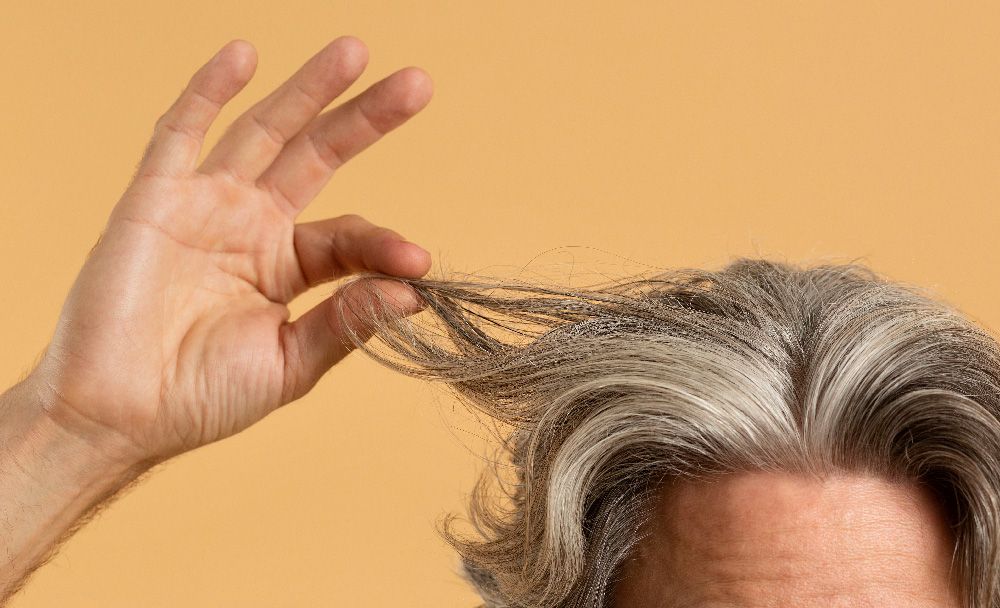
People with leucoderma may experience premature greying of hair on the affected areas of the skin. [1] [5]
2. Sensitivity to the sun
The affected skin areas may be more sensitive to the sun, making them more susceptible to sunburn. [1] [5]
3. Hearing loss develops
Melanocytes are specialized cells responsible for providing color to the skin, hair, eyes, and even the inner ear. In cases of vitiligo, the immune system targets and attacks melanocytes, resulting in depigmentation of the skin. In rare instances, the immune system may also attack melanocytes in the inner ear, leading to hearing loss. [1] [5]
4. Loss of pigmentation in the eyes
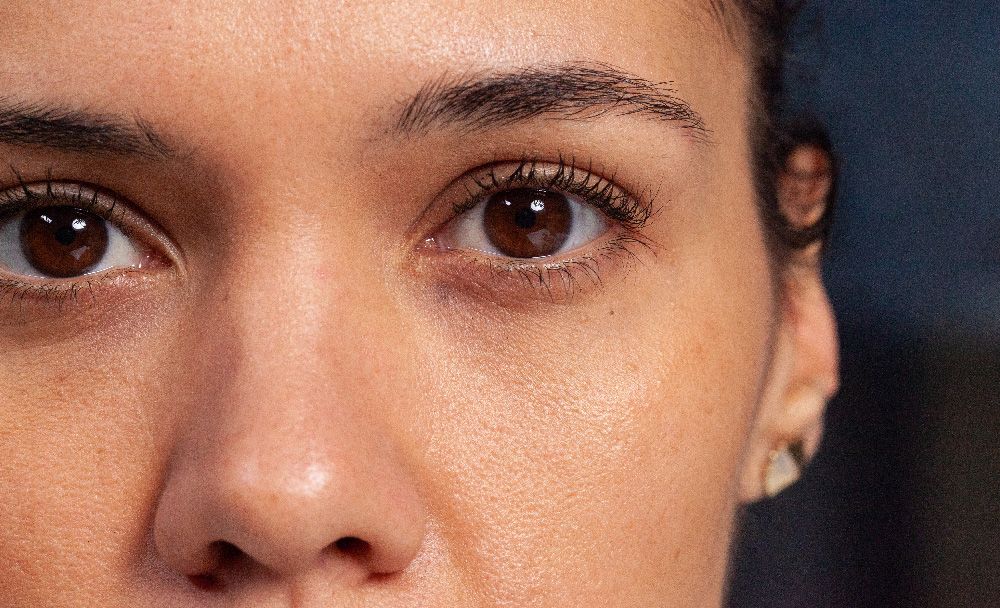
In rare cases, leucoderma can also cause loss of pigmentation in the eyes, leading to vision problems. [1] [5]
Diagnosis of Leucoderma
Diagnosis of leucoderma is based on a physical examination of the affected areas of the skin. In some cases, a biopsy of the affected skin area may be necessary to confirm the diagnosis. Blood tests may also be ordered to rule out any underlying autoimmune disorders. [6]
Treatment of Leucoderma
There is currently no cure for leucoderma, but there are several treatment options available to help manage the symptoms of the condition. The choice of treatment will depend on the extent of the patches and the individual’s preferences.
1. Topical corticosteroids
Topical corticosteroids are often prescribed to help reduce inflammation and promote repigmentation of the skin. These creams are applied directly to the affected skin areas and can be effective in mild cases of leucoderma. [6] [7]
2. Topical calcineurin inhibitors
Topical calcineurin inhibitors are another type of cream that may be used to treat leucoderma. These creams work by suppressing the immune system and reducing inflammation in the affected areas of the skin. [6] [7]
3. Phototherapy
Phototherapy involves exposing the affected skin areas to specific wavelengths of light. This treatment may be effective in mild to moderate cases of leucoderma, and it can be administered at a doctor’s office or at home using a handheld device. [6] [7]
4. Excimer laser therapy

Excimer laser therapy uses a special type of laser to stimulate repigmentation in the affected skin areas. This treatment is typically administered at a doctor’s office and may require multiple sessions. [6] [7]
5. Skin grafting
Skin grafting involves taking healthy skin from another part of the body and transplanting it onto the affected areas of the skin. This treatment may be effective in severe cases of leucoderma, but it is typically reserved as a last-resort option. [7]
Ayurvedic Treatment for Leucoderma
Leucoderma/ Vitiligo or Shwitra, is a chronic condition(deergha roga) that requires prompt treatment. Ayurvedic texts prescribe a four-step treatment approach, beginning with purification therapies or shodhana karma using herbal decoctions of Psoralia corylifolia (bakuci kwatha) and Euphorbia nerifolia (snuhi). This therapy aims to induce multiple rounds of purgation. [4] [8] [9]
The second step involves an oil massage using a specific oil chosen based on patient examination (rogi pariksha) and disease (roga). In the third step, the patient is exposed to sunlight for as long as they can tolerate, a practice known as Soorya pada santhapam in Ayurveda. The patient is given gruel (peya) for the following three days. [4] [8] [9]
If blisters arise after sun exposure, they must be punctured using a sterile needle. For the last three days, the patient is given a decoction (kwatha) made from Ficus hispida (malayu), Pterocarpus marsupium (asana), Calllicarpa macrophylla (priyangu), Peucedanum graveolens (satapuspa), Coleus vettiveroides (ambhasa), and an alkaline extract of Butea monosperma (palasa ksara), along with an alcoholic preparation of jaggery (called phanitha in Ayurveda). During these three days, the patient’s diet should be salt-free and include buttermilk. [4] [8] [9]
It is important to note that like conventional treatments, ayurvedic treatments also don’t offer a complete cure for Leucoderma but can however help manage the symptoms when administered properly by a licensed practitioner.
Lifestyle Changes to Manage Leucoderma
In addition to these medical treatments, there are also some lifestyle changes that can help manage the symptoms of leucoderma. These include:
1. Sun protection
Protecting the affected skin areas from the sun is important in preventing further damage and promoting repigmentation. This can be achieved through the use of sunscreen, protective clothing, and avoiding prolonged exposure to the sun.
2. Cosmetic camouflage
Cosmetic camouflage involves using makeup or self-tanning products to help conceal the affected areas of the skin. This can be particularly helpful in boosting self-esteem and improving quality of life.
3. Counseling and support
Living with leucoderma can be challenging, and it is important to seek emotional support and counselling to help cope with the condition.
FAQs
1. Who is at risk for developing leucoderma?
Leucoderma can occur in people of any age, gender, or ethnicity. However, it is more common in people with a family history of the condition, as well as those with certain autoimmune diseases.
2. Can leucoderma be prevented?
There is no known way to prevent the development of leucoderma. However, protecting the skin from sun exposure and avoiding trauma to the skin may help reduce the risk of developing the condition.
3. Is leucoderma contagious?
No, leucoderma is not contagious and cannot spread from person to person through contact.
4. Can leucoderma affect other parts of the body?
Leucoderma can occur on any part of the body, including the face, hands, feet, and joints. In rare cases, it may also affect the hair and the inside of the mouth.
5. Are there any alternative treatments for leucoderma?
While there is no scientific evidence to support the use of alternative treatments for leucoderma, some people may choose to try them. These may include herbal remedies, acupuncture, or dietary changes. It is important to discuss any alternative treatments with a healthcare professional before trying them.
Conclusion
Leucoderma, also known as vitiligo, is a skin disorder that causes loss of pigmentation in patches on the skin. The exact cause of the condition is not fully understood, but it is believed to be an autoimmune disorder. While there is currently no cure for leucoderma, there are several treatment options available to help manage the symptoms. These include topical corticosteroids, topical calcineurin inhibitors, phototherapy, excimer laser therapy, and skin grafting. Additionally, lifestyle changes such as sun protection and cosmetic camouflage can also be helpful in managing the symptoms of leucoderma. It is important to seek emotional support and counselling to help cope with the condition and maintain a positive outlook.
Disclaimer: This article is from an informational and modern medicine perspective only and does not constitute medical advice. Kindly seek the help of a trained medical practitioner before initiating any treatment.
References:
Vitiligo Symptoms, Treatment & Causes | NIAMS (nih.gov)
Vitiligo – an overview | ScienceDirect Topics
Vitiligo: Causes (aad.org)
Management of vitiligo: An ayurvedic perspective Khandekar A, Jadhav JH, Danga SK – Indian J Drugs Dermatol (ijdd.in)
Vitiligo: Signs and symptoms (aad.org)
Vitiligo: Diagnosis, Treatment, and Steps to Take (nih.gov)
Vitiligo: Diagnosis and treatment (aad.org)
A protocol for systematic reviews of Ayurveda treatments – PMC (nih.gov)
View of Ayurvedic management of Shwitra (vitiligo) – A Case Study (jaims.in

